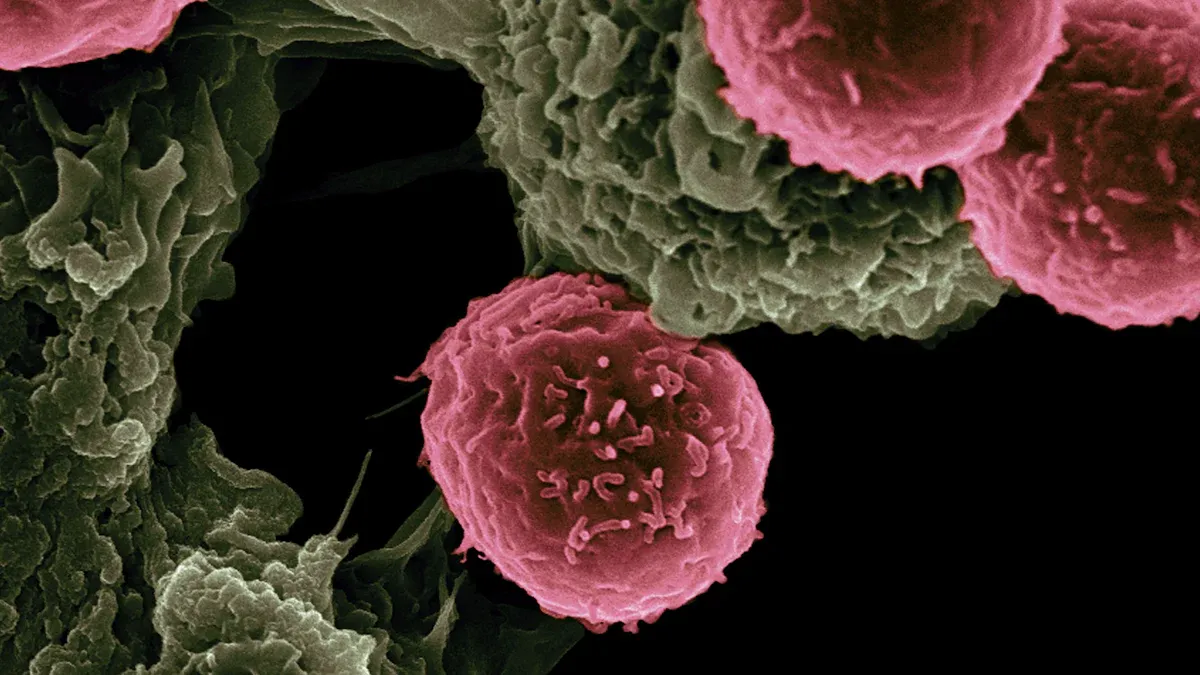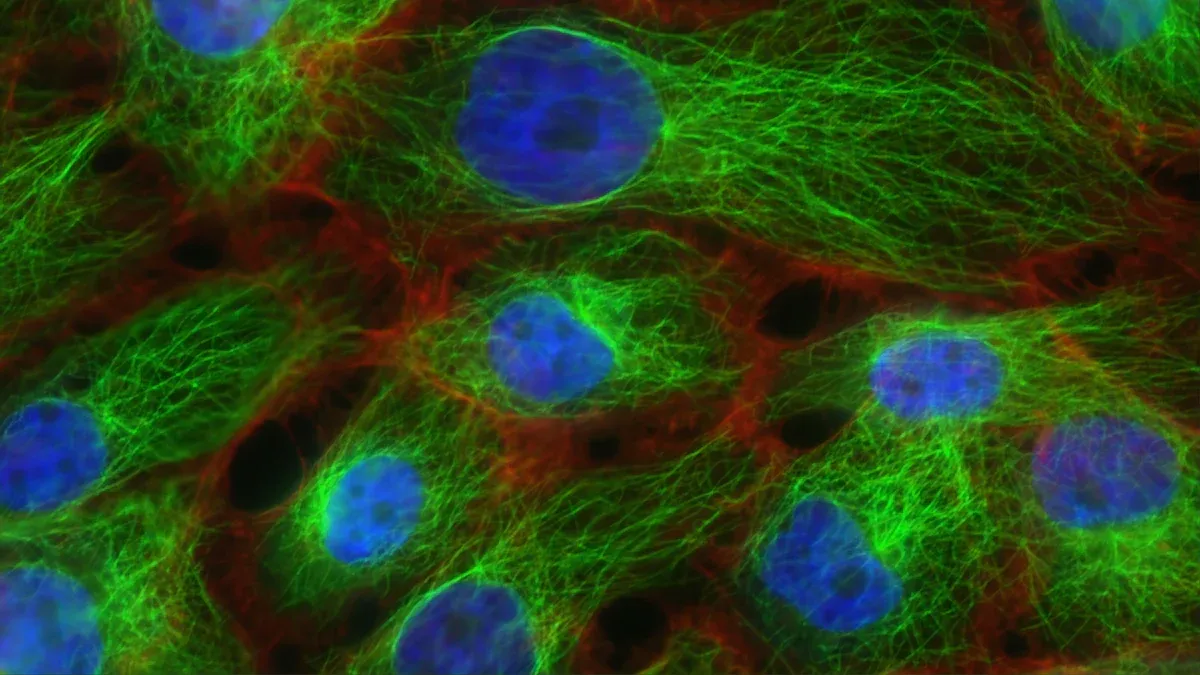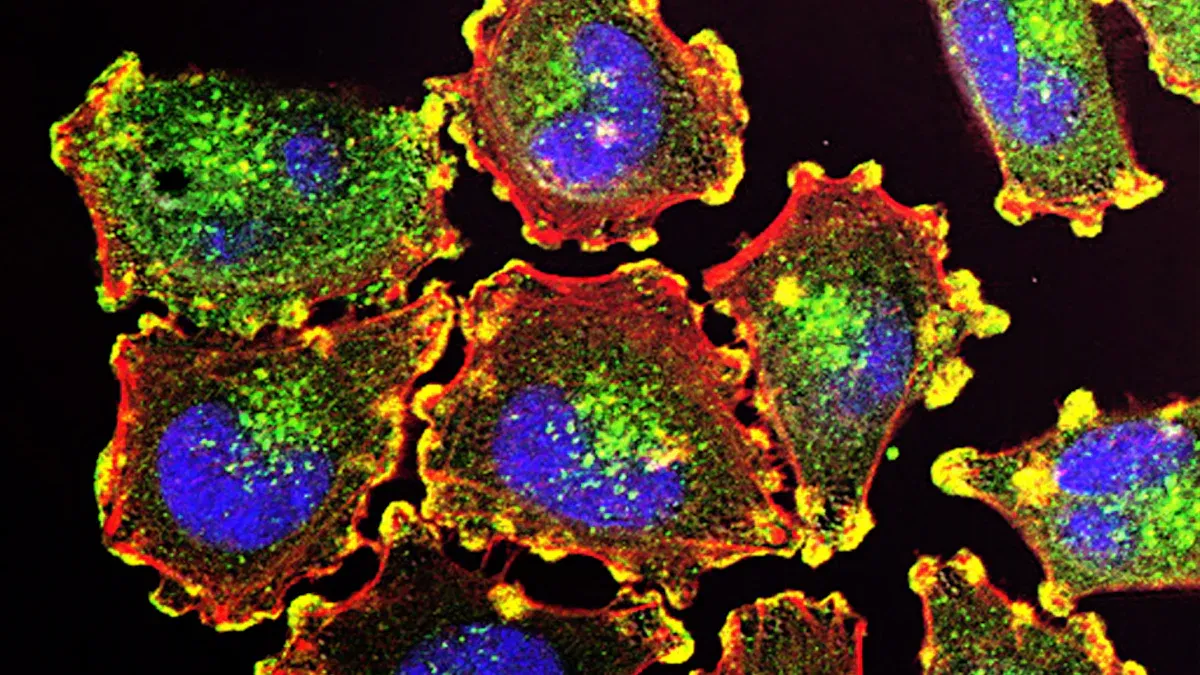Understanding Blastoma and Its Types

Blastoma is a type of cancer that develops from immature or embryonic cells. It often occurs in children and can affect several organs. Some of the most commonly impacted organs include the liver, brain, kidneys, nervous system, and lungs. For example, hepatoblastoma targets the liver and is most common in children under three years old. Nephroblastoma, also known as Wilms tumor, primarily affects the kidneys and accounts for the majority of childhood kidney cancers. Medulloblastoma, a brain tumor, can disrupt movement and balance. Understanding this condition helps you recognize its symptoms and seek timely treatment.
Key Takeaways
Blastoma is a kind of cancer that starts in young cells. It mostly affects kids. Finding it early helps with better treatment.
Common types are hepatoblastoma (liver), nephroblastoma (kidneys), and medulloblastoma (brain). Each has its own signs and treatments.
Finding it early is very important. Signs like belly swelling, losing weight for no reason, or strange-looking eyes mean you should see a doctor.
Treatment includes surgery, chemotherapy, and sometimes radiation. Using these together can help people survive better.
Genes can make the risk of blastoma higher. Problems like Beckwith-Wiedemann syndrome are linked to this cancer.
What Is Blastoma?

Definition and Characteristics
Blastoma is a unique type of cancer that originates from immature or embryonic cells. These tumors often resemble tissues seen during early development. Unlike other cancers, blastomas contain a mix of mesenchymal, epithelial, and undifferentiated elements. This composition mirrors the complexity of embryonic growth. While blastomas can occur in both children and adults, certain types are more common in specific age groups. For instance, pulmonary blastomas are more prevalent in adults, whereas hepatoblastomas and pancreaticoblastomas primarily affect children. These tumors are malignant, meaning they can spread to other parts of the body. Surgical removal is often the primary treatment option.
Origins and Development
The development of blastomas involves several cellular processes. Genomic instability plays a significant role, leading to changes in the genetic material of cells. This instability allows cells to gain or lose traits, contributing to the diversity of tumor characteristics. Scientists have found that no single mechanism explains the differences between benign and malignant tumors. Instead, multiple processes work together to shape the behavior of these cancers. The complexity of blastomas reflects the intricate nature of cellular development and growth.
Genomic instability alters hereditary material in cells.
Tumor cells gain or lose traits during development.
No single process accounts for all tumor variations.
Common Age Groups and Risk Factors
Blastomas primarily affect children, but adults can also develop certain types. Genetic predispositions play a significant role in increasing your risk. Conditions like Beckwith-Wiedemann syndrome, Aicardi syndrome, and familial adenomatous polyposis are linked to a higher likelihood of developing blastomas. For example, Beckwith-Wiedemann syndrome causes overgrowth and uneven limb development, while Aicardi syndrome affects brain structure. Other risk factors include chromosomal disorders like Trisomy 18 and inherited metabolic conditions such as glycogen storage disorders. Understanding these risks can help you stay vigilant and seek early medical advice if needed.
Types of Blastoma

Pulmonary Blastoma
Pulmonary blastoma is a rare type of cancer that originates in the lungs. It typically affects adults more than children. This tumor mimics the structure of fetal lung tissue, making it unique among lung cancers. Symptoms often include coughing, chest pain, and shortness of breath. You may also notice unexplained weight loss or fatigue. Early diagnosis plays a crucial role in managing this condition.
Treatment usually involves surgery to remove the tumor. In some cases, chemotherapy or radiation therapy may follow. Long-term outcomes vary based on factors like age, tumor stage, and treatment approach. For instance, the median survival for pulmonary blastoma patients is 108 months. About 58.2% of patients survive for five years, while 48.5% reach the ten-year mark. Even with metastatic disease, 40% of patients achieve survival beyond five years.
Hepatoblastoma
Hepatoblastoma is the most common liver cancer in children, especially those under three years old. This tumor develops from immature liver cells and often presents as an abdominal mass. You might notice symptoms such as a swollen belly, jaundice, or loss of appetite. Some children also experience fever or vomiting.
Doctors typically use surgery and chemotherapy to treat hepatoblastoma. Early detection significantly improves outcomes. Many children with localized tumors achieve complete remission after treatment. However, advanced cases may require more aggressive therapies. Genetic conditions like Beckwith-Wiedemann syndrome and familial adenomatous polyposis increase the risk of developing hepatoblastoma. Regular monitoring can help detect this cancer early in high-risk individuals.
Retinoblastoma
Retinoblastoma is a cancer of the retina, the light-sensitive tissue at the back of the eye. It primarily affects children under five years old. You might notice a white glow in the pupil, often visible in photographs. Other symptoms include crossed eyes, redness, or swelling around the eye.
This cancer arises due to mutations in the RB1 gene. About one-third of cases are hereditary, with mutations present in all body cells. The remaining two-thirds are non-hereditary, with mutations occurring only in retinal cells. Hereditary retinoblastoma follows an autosomal dominant pattern, meaning a single mutated RB1 gene increases cancer risk. Early treatment, which may include surgery, chemotherapy, or radiation, often preserves vision and prevents the spread of the tumor.
Nephroblastoma (Wilms Tumor)
Nephroblastoma, also known as Wilms tumor, is the most common kidney cancer in children. It typically affects children under the age of five. This type of blastoma develops from immature kidney cells and often presents as a painless abdominal mass. You might notice symptoms such as swelling in the abdomen, blood in the urine, or high blood pressure. Some children may also experience fever or reduced appetite.
Doctors often diagnose nephroblastoma through imaging tests like ultrasound or CT scans. A biopsy may confirm the diagnosis. Early detection plays a critical role in successful treatment. Surgery to remove the affected kidney is the primary treatment. Chemotherapy and, in some cases, radiation therapy may follow to eliminate any remaining cancer cells. Most children with nephroblastoma respond well to treatment, with survival rates exceeding 90% for localized tumors.
Rare Types of Blastoma
Pituitary Blastoma
Pituitary blastoma is an extremely rare tumor that originates in the pituitary gland. This gland, located at the base of the brain, regulates hormones essential for growth and metabolism. You might notice symptoms like delayed growth, vision problems, or hormonal imbalances.
This condition often occurs in infants and young children. Genetic mutations, particularly in the DICER1 gene, are linked to its development. Treatment usually involves surgery to remove the tumor. Depending on the case, doctors may recommend additional therapies like chemotherapy.
Medulloblastoma
Medulloblastoma is a fast-growing brain tumor that arises in the cerebellum, the part of the brain responsible for balance and coordination. It primarily affects children but can also occur in adults. Symptoms often include headaches, nausea, and difficulty walking.
Doctors use imaging techniques like MRI to diagnose medulloblastoma. Treatment typically involves surgery to remove the tumor, followed by radiation therapy and chemotherapy. Early intervention improves outcomes significantly.
Pleuropulmonary Blastoma
Pleuropulmonary blastoma is a rare cancer that develops in the lungs or chest cavity. It usually affects children under six years old. Symptoms may include coughing, chest pain, or difficulty breathing.
Doctors classify this tumor into three types based on its progression. Type I is cystic and less aggressive, while Types II and III are more advanced and solid. Treatment often involves surgery, chemotherapy, and sometimes radiation therapy. Genetic testing for DICER1 mutations is common in these cases.
Note: Early detection and treatment of rare blastomas can significantly improve survival rates. If you notice unusual symptoms, consult a healthcare provider promptly.
Clinical Features and Diagnosis
Symptoms of Blastoma
General Symptoms
Blastomas often present with symptoms that can be mistaken for other conditions. You might notice fatigue, unexplained weight loss, or a persistent fever. These general symptoms occur because the body reacts to the tumor's presence. In some cases, you may also experience night sweats or a loss of appetite. These signs are not specific to blastomas but should prompt medical attention if they persist.
Organ-Specific Symptoms
The symptoms of blastoma vary depending on the affected organ. For instance, a kidney blastoma (nephroblastoma) may cause abdominal swelling or blood in the urine. A liver blastoma (hepatoblastoma) might lead to jaundice or a noticeable mass in the abdomen. If the blastoma affects the brain, such as medulloblastoma, you could experience headaches, nausea, or balance issues. Recognizing these organ-specific symptoms can help you seek timely medical care.
Diagnostic Techniques
Imaging Methods
Doctors rely on imaging techniques to diagnose blastomas accurately. Each method offers unique advantages depending on the tumor's location and type. The table below highlights the most effective imaging techniques:
Imaging Technique | Description |
|---|---|
Ultrasound | Non-invasive and often the first choice for children suspected of blastoma. |
CT Scan | Provides detailed cross-sectional images for tumor evaluation. |
MRI | The gold standard for soft tissue imaging, crucial for staging and planning. |
PET | Detects metabolic activity, identifying tumors with increased glucose uptake. |
These methods allow doctors to visualize the tumor and assess its size, location, and spread.
Biopsy and Histopathology
A biopsy confirms the diagnosis of blastoma. During this procedure, doctors remove a small tissue sample from the tumor. Pathologists then examine the sample under a microscope to identify cancerous cells. Histopathology provides critical information about the tumor's type and aggressiveness. This step is essential for planning effective treatment.
Differential Diagnosis
Differentiating blastomas from other conditions is vital for accurate treatment. Doctors consider other possibilities, such as benign tumors or infections, that may mimic blastoma symptoms. Imaging results, combined with biopsy findings, help rule out these alternatives. For example, a kidney mass might initially suggest nephroblastoma, but further tests could reveal a non-cancerous cyst. A thorough evaluation ensures you receive the correct diagnosis and care.
Treatment and Prognosis
Treatment Approaches
Surgery
Surgery plays a central role in treating many types of blastoma. Doctors often begin with a biopsy to confirm the diagnosis. This procedure involves removing a small tissue sample, usually under general anesthesia. Once the diagnosis is confirmed, tumor resection becomes the primary surgical goal. Surgeons aim to remove as much of the tumor as possible, often after chemotherapy has reduced its size. Additional procedures may include a bone marrow biopsy or the placement of intravenous access devices to facilitate further treatments.
Chemotherapy
Chemotherapy uses powerful drugs to target and destroy cancer cells. It is often used alongside surgery to shrink tumors before removal or to eliminate remaining cancer cells afterward. The specific drugs and dosages depend on the type and stage of the blastoma. For example, children with hepatoblastoma often receive cisplatin-based chemotherapy, which has shown high effectiveness. While chemotherapy can cause side effects like nausea or hair loss, it remains a critical component of treatment.
Radiation Therapy
Radiation therapy uses high-energy rays to kill cancer cells or stop their growth. This approach is particularly effective for blastomas located in sensitive areas, such as the brain or chest, where surgery might not be feasible. Doctors carefully plan radiation treatments to minimize damage to surrounding healthy tissues. For instance, medulloblastoma patients often receive targeted radiation to the brain and spinal cord to prevent the spread of cancer.
Tip: Combining surgery, chemotherapy, and radiation therapy often improves treatment outcomes for many types of blastoma.
Prognosis and Survival Rates
The prognosis for blastoma patients depends on several factors, including the type of tumor, its stage at diagnosis, and the patient’s age. For example, children with localized nephroblastoma have survival rates exceeding 90%. However, advanced stages or distant metastases significantly lower survival chances. Pulmonary blastoma patients often face varied outcomes, with survival rates influenced by factors like age and clinical stage. Patients without other malignancies tend to have better survival rates, as additional cancers complicate treatment and recovery.
Factors Influencing Treatment Outcomes
Several factors impact the success of blastoma treatments:
Age at Diagnosis: Younger patients generally respond better to treatment. In contrast, patients aged 65 or older face higher disease-specific and other-cause mortality rates.
Stage of Diagnosis: Early-stage tumors have better outcomes. Patients diagnosed at distant stages often experience worse survival rates, with nearly half succumbing to the disease within 20 months.
Clinical Stage: Localized tumors are easier to treat, while regional or distant stages require more aggressive therapies and carry higher risks.
Understanding these factors can help you appreciate the importance of early detection and tailored treatment plans.
Understanding blastoma equips you to recognize its symptoms and explore treatment options. This cancer originates from immature cells and can affect various organs, including the liver, kidneys, and brain. Early detection improves outcomes significantly, as localized tumors respond better to treatment.
Ongoing research continues to enhance treatment strategies:
Scientists are testing new combinations of chemotherapy drugs for high-risk neuroblastoma.
Tandem stem cell transplants are being compared to single transplants for better effectiveness.
Targeted drugs, such as those focusing on the ALK gene, show promise in attacking cancer cells.
Immunotherapy, including CAR T-cell therapies, is being evaluated for its potential to fight neuroblastoma.
These advancements offer hope for improved survival rates and quality of life. Staying informed and seeking timely care can make a significant difference.
FAQ
What causes blastoma?
Blastoma develops from immature or embryonic cells. Genetic mutations, such as changes in the RB1 or DICER1 genes, often trigger this cancer. Some inherited conditions, like Beckwith-Wiedemann syndrome, also increase your risk. Early genetic testing can help identify potential risks.
Can adults develop blastoma?
Yes, adults can develop certain types of blastoma, like pulmonary blastoma. However, most cases occur in children due to the cancer’s origin in embryonic cells. If you notice unusual symptoms, consult a doctor regardless of your age.
How is blastoma diagnosed?
Doctors use imaging techniques like CT scans, MRIs, or ultrasounds to locate the tumor. A biopsy confirms the diagnosis by analyzing a tissue sample. These methods help determine the tumor type and guide treatment planning.
Is blastoma curable?
Many types of blastoma are treatable, especially when detected early. Surgery, chemotherapy, and radiation therapy often lead to remission. Survival rates vary by tumor type and stage, but early intervention improves your chances significantly.
What are the long-term effects of treatment?
Blastoma treatments may cause side effects like fatigue, hair loss, or hormonal imbalances. Some children experience growth delays or learning difficulties. Regular follow-ups help manage these effects and ensure your recovery stays on track.
Tip: Keep a record of your treatment history to share with healthcare providers during follow-ups.
See Also
An In-Depth Overview of Various Cancer Types
Understanding Acute Biphenotypic Leukemia in Layman's Language
Understanding Adamantinoma: Its Impact on the Human Body
Anaplastic Large Cell Lymphoma: Definition and Treatment Options
